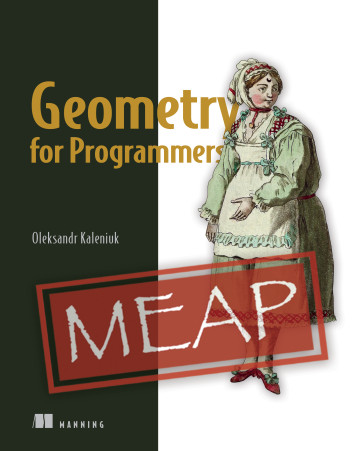Demos
This is Words and Buttons Online — a collection of interactive #tutorials, #demos, and #quizzes about #mathematics, #algorithms, and #programming.
A smooth and sharp image interpolation you probably haven't heard of
An image interpolation that gives us a continuous and smooth image, where every interpolated value only depends on the four neighboring pixel values. The image becomes smooth, but sharp features remain sharp.
#algorithms #demos #mathematics
Rational interpolation is a step forward from polynomial interpolation towards rational splines. With rational interpolation, you can build functions that run through a set of points and also have vertical asymptotes whenever you want. With this capability, you can now model functions like logarithms better.
#demos #mathematics
A picture is worth a thousand tags
This shows how a picture can be turned into an HTML table. With this, you can not only have nicer tables or uglier pictures, but you can have something that is both at the same time.
#demos
Can we use lemniscates for ultra-cheap vector graphics?
This depicts an old idea of using multifocal lemniscates to draw arbitrary shapes. In some applications, this may be indeed an economical alternative to splines.
#demos #mathematics
An interactive explanation of how polynomial transformations such as trilinear or biquadratic or even linear-cubic work, and how to craft your own.
#demos #mathematics
Arctangent scale. It's like the logarithmic scale but infinite
An interactive demo of how, with arctangent used as a scale, we can show any function on a screen. And not just a fragment of it but the whole function.
#demos #mathematics
A simple image processing algorithm that cleans up dirt stains from old newspapers. I called it “darning” because of how it works.
#algorithms #demos #mathematics
Error codes are not numbers. But they are. Can we exploit that?
An interactive explanation of how we can use floating-point NaNs as error code holders in C++.
#demos #mathematics #programming
This generates honeycomb textures of a special quasi-irrational form. Explanation included.
#demos #mathematics
SWInE: Simplicial Weight Interpolation and Extrapolation
An alternative to splines nobody knows about. The localization of Shepard's method for a simplicial complex.
#demos #mathematics
Quadratic splines are useful too
This explains simple quadratic splines, how to craft one yourself, and why.
#demos #mathematics
Circles and lines vs. polynomial splines
An alternative to polynomial splines. Smooth parametric curves made from arcs and line segments.
#demos #mathematics
Lexical differential highlighting instead of syntax highlighting
This type of highlighting is ideal for assembly. With it, the things that shouldn't seem similar usually don't.
#demos #programming
This is an example of an image vectorization algorithm. It shows the bilinear interpolation, polynomial approximation, differential analysis, and iterative algorithms working together to solve a practical problem
#algorithms #demos #mathematics
The simplest possible smooth contouring algorithm
A 3-part smooth contouring algorithm that shows partial derivatives, gradients, and parametric polynomials working together.
#algorithms #demos #mathematics
A cheap trick to speed up recursion in C++
More often than not, recursion is not your performance problem, to begin with. But even if it is, you can often avoid recursion altogether. When for some reason you can't, this trick helps.
#demos #programming
Estimating floating-point error the easy way
An explanation of how to measure computational error while working with floating-point numbers, and why.
#demos #mathematics #programming
Outperforming everything with anything
A 100 lines of Python code that substitute the compiler front-end for a specific computation. This shows that you don't need a “fast” compiling language to write efficient code. In fact, a compilation is only one of the multiple ways to achieve speed.
#demos #programming
Vastly outperforming LAPACK with C++ metaprogramming
Still not really about LAPACK. It's a second part of the “outperforming” series explaining how the C++ metaprogramming can appear useful for efficient code generation.
#demos #programming
Outperforming LAPACK with C metaprogramming
Ok, it's not really about LAPACK. You can consider it clickbait if you wish. It's about how to tell a compiler to write the code you want with a limited arsenal of tools the C language provides.
#demos #programming
An interactive introduction to iterative algorithms
An interactive explanation of how iterative algorithms work. This explains convergence and the exit condition problem on an oversimplified linear system solver.
#algorithms #demos #mathematics
| All the source code for Words and Buttons is available on GitHub. | ||
| There is also RSS with all the news. | ||
 |
I also wrote a book. It's called Geometry for Programmers and it is exactly what is says in the title. It's about splines, voxels, transformations, all in the context of efficient programming.
Here's why: why.html. |
|